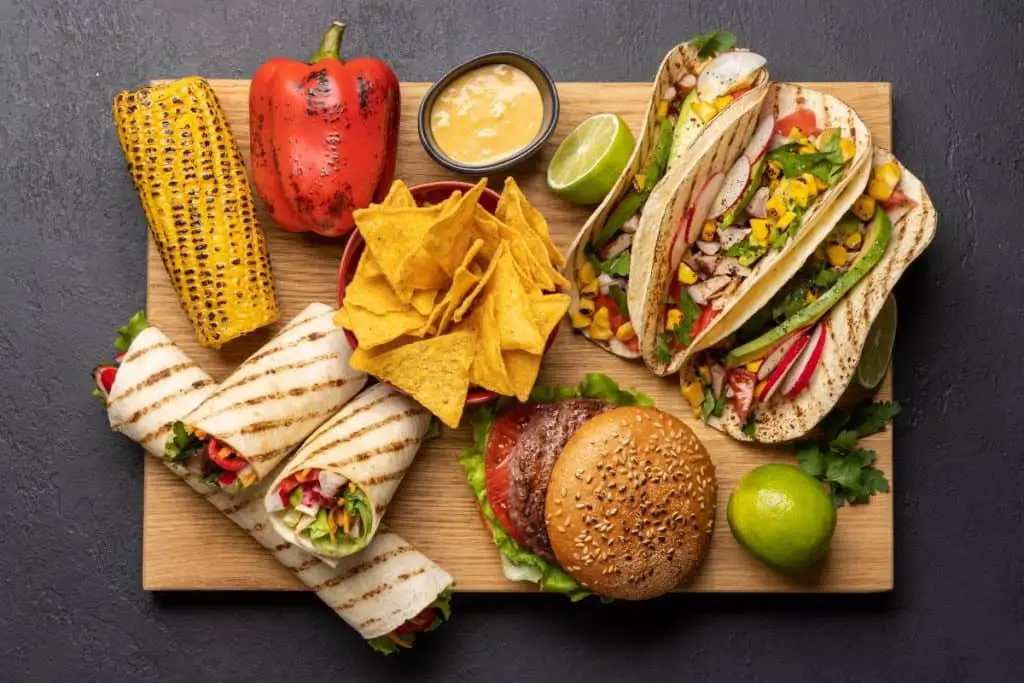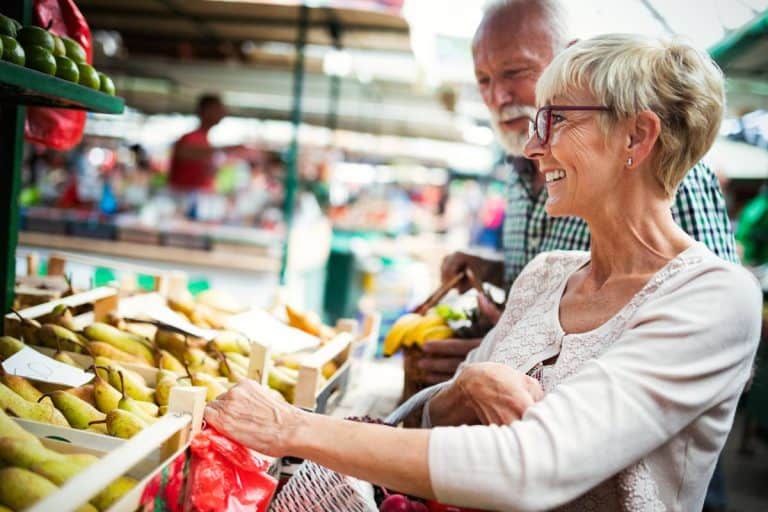A Foodie’s Guide to the Best Western Food Thailand
While Thailand dazzles with its aromatic curries and vibrant street food, sometimes you crave familiar Western flavors. Beyond pad thai and mango sticky rice lies a surprisingly rich Western food scene worth exploring. From elegant French bistros to hearty American diners, Thailand offers Western cuisine that rivals its traditional counterparts. Whether you’re an expat missing home flavors, a traveler needing a culinary break, or a foodie seeking global experiences, Thailand’s Western food options will surprise and delight your palate with both authentic classics and innovative fusion creations.
Key Takeaways
- The diversity of Western cuisine available beyond tourist areas
- The accommodation of dietary restrictions at Western restaurants
- The unique fusion experiences combining Western and Thai flavors
Why Crave Western Food in Thailand?
The Comfort of Familiar Flavors
Let’s face it, sometimes you just crave the familiar comfort of a juicy burger or a cheesy pizza. While Thai food is undoubtedly amazing, extended travel can lead to cravings for tastes of home. This isn’t about rejecting the local cuisine – it’s about finding balance during your culinary journey through Thailand.
Many long-term travelers and expats speak of reaching a point where they need a brief respite from the intensity of Thai flavors. The combination of spices, herbs, and heat that makes Thai food so distinctive can occasionally overwhelm palates accustomed to different flavor profiles. Having access to Western dishes provides a welcome change of pace that allows you to return to Thai cuisine with renewed appreciation.
Dietary Considerations and Preferences
For travelers with specific dietary requirements, Western restaurants often provide clearer options and greater flexibility. Vegetarians and vegans might find it challenging to navigate traditional Thai cuisine, where fish sauce and shrimp paste are common ingredients even in seemingly meat-free dishes. Similarly, those with gluten sensitivities or allergies may feel more confident ordering from Western menus where these concerns are more commonly addressed.
Many Western establishments in Thailand have recognized these needs and offer detailed menu information about allergens and ingredients. This transparency can be particularly reassuring for travelers with serious food allergies or strict dietary requirements who want to enjoy their meals without worry.
Special Occasions and Comfort Food
Western restaurants also fulfill the role of special occasion dining in Thailand. When celebrating birthdays, anniversaries, or other milestones, many travelers and expats seek out high-end Western establishments that offer a different atmosphere and dining experience from everyday meals.
Additionally, there’s the undeniable appeal of comfort food – those dishes that transport us back to childhood or provide emotional nourishment beyond mere sustenance. Whether it’s a perfectly cooked steak, a creamy pasta dish, or a classic breakfast with all the trimmings, these familiar flavors can provide a sense of security and well-being that’s particularly valuable when navigating the exciting but sometimes overwhelming experience of traveling in a foreign country.
Beyond Burgers and Fries: Exploring Diverse Western Cuisines
The Western food scene in Thailand extends far beyond fast food chains and tourist traps. Throughout the country, you’ll find passionate chefs and restaurateurs dedicated to bringing authentic Western flavors to Thailand, often with creative local twists that result in unique fusion creations.
Italian Delights: From Classic to Creative
Italian cuisine has found a special place in the hearts of Thai diners. From Bangkok to Chiang Mai, you’ll discover Italian restaurants ranging from traditional trattorias to innovative contemporary establishments.
Wood-fired pizzerias have become particularly popular, with many offering both classic Italian toppings and creative combinations that incorporate local ingredients. Imagine a perfectly crisp pizza crust topped with tom yum-inspired flavors or even the controversial addition of durian – Thailand’s notorious “king of fruits.” While purists might raise an eyebrow, these fusion creations often result in surprisingly delicious flavor combinations that represent the best of both culinary worlds.
Pasta dishes receive similar treatment, with traditional recipes like carbonara and bolognese appearing alongside inventive creations that incorporate Thai herbs and spices. Many Italian restaurants in Thailand pride themselves on making fresh pasta in-house, ensuring an authentic texture and flavor that rivals what you might find in Italy itself.
For those seeking the full Italian experience, upscale Italian restaurants in Bangkok and other major cities offer comprehensive menus featuring antipasti, primo, secondo, and dolce courses. These establishments often import premium ingredients directly from Italy, including cheeses, cured meats, and wines, to create an authentic dining experience.
French Flair: Elegance and Precision
French cuisine in Thailand represents the pinnacle of fine dining for many food enthusiasts. Establishments like Le Normandie in Bangkok have earned international recognition for their exquisite interpretation of French culinary traditions using both imported and local ingredients.
The French influence extends beyond high-end restaurants to charming bistros and cafés that capture the essence of Parisian dining. These venues often focus on classic French dishes like coq au vin, beef bourguignon, and onion soup, prepared with meticulous attention to technique and presentation.
Perhaps the most visible French culinary influence can be found in Thailand’s burgeoning patisserie scene. Bakeries specializing in French pastries have proliferated throughout major cities, offering exquisite creations from flaky croissants to elaborate entremets. Many Thai pastry chefs have trained in France, returning with technical skills that they apply to traditional French recipes, sometimes incorporating subtle Thai influences like pandan, coconut, or tropical fruits.
The French approach to cooking, with its emphasis on technique, quality ingredients, and elegant presentation, has also influenced the broader fine dining scene in Thailand. Many chefs, regardless of the specific cuisine they specialize in, draw on French culinary principles as the foundation for their cooking.
American Comfort Food: From Diners to BBQ Joints
American cuisine in Thailand offers a diverse range of comfort foods that appeal to both locals and tourists seeking familiar flavors. American-style diners have become increasingly popular, serving classic burgers, milkshakes, and all-day breakfast options.
Burger culture has exploded in Thailand’s cities, with specialty burger restaurants competing to create the most impressive patties. From simple cheeseburgers to towering creations with multiple patties and creative toppings, burger enthusiasts will find plenty to explore. Many establishments pride themselves on house-made buns, secret sauce recipes, and carefully sourced beef, elevating the humble burger to gourmet status.
American breakfast classics like pancakes, waffles, and eggs Benedict have found particular favor among Thai diners, who often enjoy these dishes throughout the day rather than strictly in the morning. Brunch culture has taken root in urban areas, with weekend brunches becoming a popular social occasion for both expats and locals.
Southern American barbecue has also made inroads in Thailand, with dedicated BBQ joints smoking ribs, brisket, and pulled pork according to traditional methods. These establishments often import American wood chips or adapt local woods to achieve authentic smoky flavors, pairing their meats with classic sides like mac and cheese, cornbread, and coleslaw.
The Allure of Steakhouses: Premium Meats and Wine
Steakhouses represent another significant category in Thailand’s Western dining scene, catering to those seeking high-quality meat prepared with precision. These establishments often import premium beef from Australia, the United States, Japan, and other renowned beef-producing regions.
The steakhouse experience in Thailand typically emphasizes not just the quality of the meat but the entire dining ritual: selecting your cut from a display or menu, choosing your preferred doneness, and pairing your steak with complementary sides and sauces. Many steakhouses employ skilled chefs who understand the specific cooking techniques required for different cuts and thicknesses.
Wine culture flourishes in these establishments, with extensive wine lists featuring selections specifically chosen to complement the robust flavors of grilled meats. Sommeliers guide diners through pairing options, introducing them to both classic steakhouse pairings and unexpected combinations.
While steakhouses generally adhere closely to Western traditions, some incorporate subtle Thai influences through locally sourced produce, unique spice rubs, or signature sauces that add a hint of Thai flavor without overwhelming the natural taste of the beef.

European Classics: From German Brauhaus to Spanish Tapas
Beyond the more commonly found cuisines, Thailand offers authentic tastes from across Europe. German restaurants and brauhäuser serve hearty classics like schnitzel, sausages, pretzels, and sauerkraut, often accompanied by imported German beers. Many celebrate seasonal events like Oktoberfest with special menus and festivities that attract both expats and curious locals.
Spanish cuisine has gained popularity in recent years, with tapas bars offering authentic small plates perfect for Thailand’s warm climate and social dining culture. From perfect tortilla española to garlicky gambas al ajillo, these establishments capture the convivial spirit of Spanish dining.
British and Irish pubs provide another familiar haven for Western visitors, serving classic pub grub like fish and chips, bangers and mash, and Sunday roasts alongside a selection of beers on tap. These venues often double as social hubs for expat communities, hosting quiz nights, live sports screenings, and other events that recreate the atmosphere of home.
Finding Authentic Flavors: Where to Look
Navigating Thailand’s Western food scene requires knowing where to look beyond the obvious tourist spots. With a bit of research and local insight, you can discover truly exceptional Western dining experiences throughout the country.
Fine Dining Establishments: World-Class Experiences
Thailand’s luxury hotels and standalone fine dining restaurants offer some of the most impressive Western cuisine in Southeast Asia. In Bangkok particularly, internationally acclaimed chefs have established outposts that rival their Western counterparts in quality and creativity.
These establishments typically feature chefs who have trained extensively abroad before bringing their expertise to Thailand. Many embrace a farm-to-table philosophy, building relationships with local producers who grow specific ingredients to their specifications while importing others to ensure authenticity.
The fine dining experience extends beyond the food to encompass impeccable service, carefully designed interiors, and thoughtfully curated wine and cocktail programs. While prices at these establishments are significantly higher than at local Thai restaurants, they often represent good value compared to equivalent dining experiences in Western countries.
Casual Eateries and Pubs: Relaxed Atmosphere with Quality Food
For more casual Western dining, Thailand offers numerous pubs, bistros, and informal restaurants that strike a balance between quality and accessibility. These establishments typically feature relaxed atmospheres, reasonable prices, and menus that focus on well-executed classics rather than culinary innovation.
Many of these venues are owned and operated by Western expats who identified a gap in the market for authentic yet affordable versions of their home cuisines. Their personal connection to the food they serve often translates into passionate attention to detail and authenticity.
The pub scene deserves special mention for its role in Thailand’s Western food landscape. Beyond serving as watering holes, many pubs offer extensive food menus featuring surprisingly good Western comfort foods. These venues often become community hubs for both expats and locals, hosting regular events and fostering cross-cultural connections through shared appreciation of food and drink.
Hidden Gems and Local Favorites: Off the Beaten Path
Some of Thailand’s best Western restaurants fly under the radar of mainstream tourism, known primarily to locals and long-term expats. These hidden gems might lack the polished marketing and prime locations of more famous establishments, but they often compensate with exceptional food, personal service, and unique character.
Finding these spots typically requires moving beyond tourist areas and seeking recommendations from locals or online communities. Expat forums, food blogs focused on specific cities, and social media groups can be invaluable resources for discovering these lesser-known culinary treasures.
Many of these establishments have developed loyal followings precisely because they don’t cater exclusively to tourists. They focus on consistent quality and authenticity rather than adapting their offerings to perceived tourist preferences, resulting in more genuine culinary experiences.
Food Courts and Shopping Malls: Accessible Options
Don’t dismiss Thailand’s shopping malls as mere commercial spaces – they often house some surprisingly good Western dining options. From food courts offering budget-friendly Western fast food to standalone restaurants with more refined offerings, malls provide air-conditioned comfort and convenient access to multiple cuisines under one roof.
Food courts in particular offer an accessible entry point to Western flavors, with stalls specializing in different cuisines serving portion-controlled meals at reasonable prices. While the quality varies, many mall-based Western food operations maintain high standards to compete in Thailand’s discerning food scene.
Tips for the Discerning Diner
To make the most of your Western dining experiences in Thailand, consider these practical tips from seasoned expats and frequent visitors.
Navigating Menus and Spice Levels: Communication is Key
Even in Western restaurants, Thai influence often manifests in unexpected heat levels. Don’t hesitate to discuss your spice tolerance when ordering, as “not spicy” might have different meanings depending on the restaurant and the chef’s background.
Learning a few key Thai phrases can help communicate your preferences more effectively. “Mai pet” (not spicy) and “pet nit noi” (a little spicy) are particularly useful when discussing spice levels. Most staff at Western restaurants speak some English, but making an effort to communicate in Thai is always appreciated and can lead to more accurately prepared dishes.
When trying fusion dishes that combine Western formats with Thai flavors, ask for recommendations based on your taste preferences. Staff can often guide you toward options that balance familiarity and adventure according to your personal comfort level.
Embracing Fusion Dishes: The Best of Both Worlds
One of the most exciting aspects of Western cuisine in Thailand is the creative fusion that naturally evolves when culinary traditions meet. Rather than dismissing these innovations as inauthentic, approach them with an open mind as expressions of Thailand’s unique culinary evolution.
Some of the most memorable dining experiences come from chefs who skillfully blend Western techniques with Thai ingredients or incorporate Thai flavor profiles into Western classics. Pizza topped with tom yum seafood, pasta in a creamy green curry sauce, or burgers with lemongrass-infused patties represent the kind of creative cross-cultural dining that makes Thailand’s food scene so dynamic.
Many chefs developing these fusion concepts have trained extensively in both culinary traditions, giving them the knowledge and skill to create meaningful connections between seemingly disparate food cultures. Their creations aren’t random combinations but thoughtful explorations of complementary flavors and techniques.
Budgeting for Western Food in Thailand: Managing Expectations
Western food generally costs more than local Thai cuisine, particularly when imported ingredients are involved. Setting realistic budget expectations will help avoid disappointment or sticker shock during your culinary explorations.
As a general rule, Western fine dining in Thailand costs significantly less than equivalent experiences in Western countries but substantially more than local Thai restaurants. Mid-range Western restaurants typically charge prices comparable to casual dining establishments in Western countries, while budget options like food court stalls offer Western-style meals at prices slightly higher than their Thai counterparts.
For travelers on tight budgets who still want to enjoy Western flavors, look for lunch specials, early bird deals, and happy hours that offer reduced prices during off-peak hours. Many establishments also offer loyalty programs or promotions through food delivery apps that can make Western dining more accessible.
Checking Online Reviews: Research Before You Go
Before committing to a restaurant, particularly for special occasions or significant expenses, research online reviews to gauge the consistency and quality of the establishment. Platforms like TripAdvisor, Google Reviews, and local food blogs provide valuable insights from previous diners.
When reading reviews, look for comments addressing the specific dishes you’re interested in and pay attention to reviews from diners who seem to share your culinary preferences and priorities. Be wary of outlier reviews (both extremely positive and extremely negative) and look for consensus patterns across multiple sources.
Many of the best Western restaurants in Thailand maintain active social media presences where they showcase current menus, special events, and behind-the-scenes glimpses of their operations. Following potential dining destinations on platforms like Instagram can help you gauge their current offerings and overall approach before making a reservation.
The Evolution of Western Cuisine in Thailand
The presence and development of Western cuisine in Thailand reflect broader cultural exchanges and globalization patterns that have shaped the country’s modern identity. Understanding this context adds depth to your appreciation of Western dining options throughout the country.
Western culinary influences first arrived in Thailand during the reign of King Rama IV (1851-1868), when the kingdom began opening to Western diplomatic and trade relationships. European diplomatic missions introduced their native cuisines to the Thai royal court, where local chefs began adapting Western techniques and flavors to local ingredients and preferences.
Throughout the 20th century, Western foods gradually became more accessible to the general population, first through high-end hotels catering to international visitors and later through standalone restaurants and fast-food chains. The American military presence during the Vietnam War era significantly accelerated this process, introducing American comfort foods that subsequently became integrated into Thailand’s urban food landscape.
Today’s vibrant Western food scene represents the latest evolution in this long history of culinary exchange. Modern chefs in Thailand draw inspiration from global trends while maintaining connections to both Western culinary traditions and local food culture, creating dining experiences that reflect Thailand’s cosmopolitan character.
BetterLivingAsia: Your Guide to Expat Life and Culinary Adventures
As the founder of BetterLivingAsia.com, Tom Kitti brings over 35 years of American experience to his insights on expat life in Thailand.
After relocating from the US, Tom established this comprehensive resource to help others navigate the joys and challenges of Asian living. The BetterLivingAsia team understands that familiar food provides comfort during transition, making this guide to Western cuisine an essential resource for expats, retirees, and travelers.
Visit BetterLivingAsia.com for more expert guidance on retiring, working, or starting a business in Thailand and beyond. Our growing network of experts continues to expand coverage to other Asian countries, providing trusted advice on everything from culinary exploration to practical living solutions.
FAQs
Can you get Western food in Thailand?
Absolutely! Thailand offers everything from fine dining Western restaurants to casual pubs and food courts with familiar Western options.
What are the food guidelines for Thailand?
Avoid tap water, eat at busy places, try street food cautiously, and remember Western options are available if you need a break.
Can you eat English food in Thailand?
Yes! British pubs serving fish and chips, full English breakfasts, and Sunday roasts are available in most tourist areas.
What is included in Western food?
Western food includes Italian, French, American, German, and Spanish cuisines — from pasta and steaks to burgers and tapas.
How expensive is Western food in Thailand?
Western food typically costs more than Thai cuisine but less than equivalent meals in Western countries.
Conclusion
Thailand’s food landscape brilliantly balances traditional flavors with international influences, creating a perfect environment for culinary exploration. As you venture through this gastronomic paradise, allow yourself to enjoy both authentic Thai dishes and Western comfort foods without guilt.
The beauty of Thailand’s dining scene lies in its diversity – whether you’re savoring a French pastry in Bangkok, enjoying wood-fired pizza on Koh Samui, or discovering fusion creations in Chiang Mai. These Western culinary experiences complement your Thai food adventures, creating a richer, more nuanced appreciation of Thailand’s evolving food culture.
Make BetterLivingAsia.com your companion in navigating Thailand’s Western food scene and beyond. Our experienced team continues to uncover hidden gems and practical advice to enhance your Asian journey, helping you create your ideal balance of familiar comforts and exciting new discoveries.






